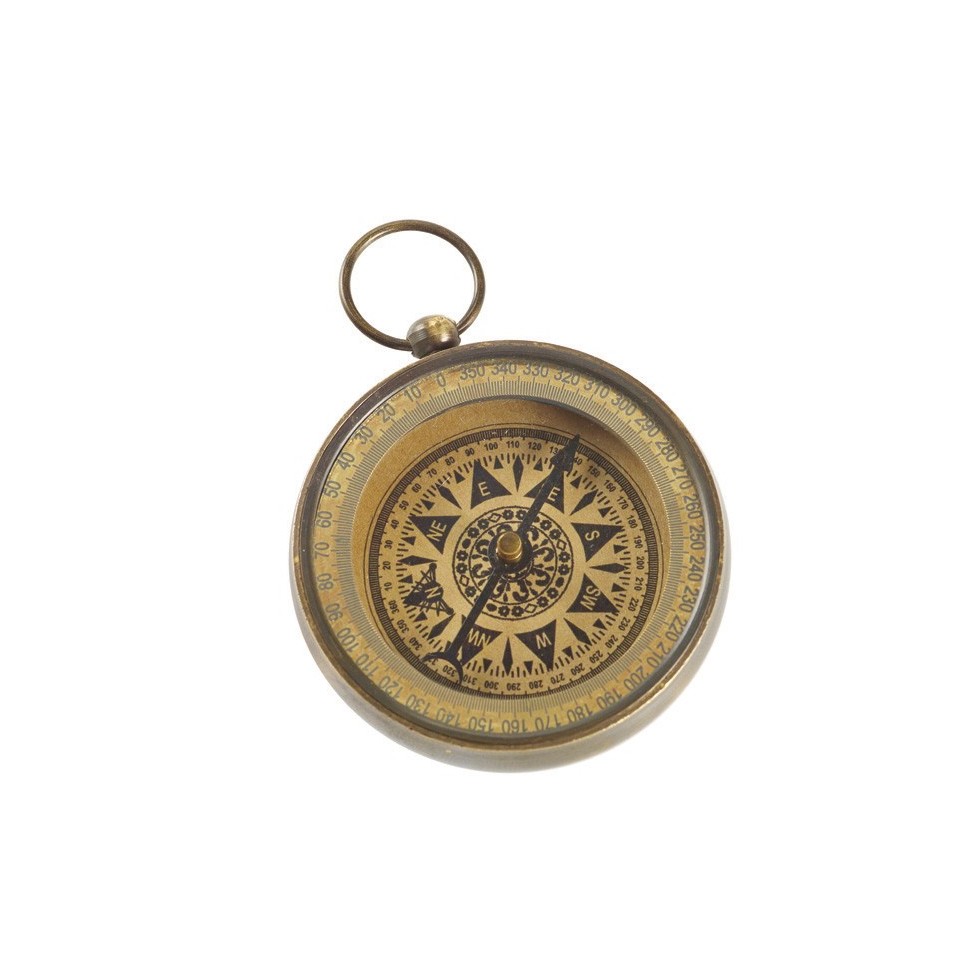

| Los pedidos realizados el día 25 de Julio, se procesarán el día 26 por fiesta local. |




Brass compass with lovely compass rose. Comes with navy blue velvet bag.
NAUTICAL COMPASS.
The compass (from the Latin "passus" ("step")) opened up the world to exploration and discovery. The principle of the magnetic needle was already known to the Chinese in the 3rd century BC and was first used by feng shui priests to tell them where and how to build. It was adapted to maritime navigation by Chinese sailors around the year 1000. The first compasses comprised a magnetic needle floating in a bowl of water, with the needle suspended on a thread or threaded through a reed. The Arabs perfected this by mounting the needle on a pivot. The compass arrived in Europe between the 10th and 11th centuries, enabling sailers to cross the oceans and explorers to discover the continents. The first instrument to resemble the modern compass is attributed to Portuguese citizen Ferrande (1483).
Brass compass with lovely compass rose. Comes with navy blue velvet bag.
Elegant nautical-inspired compass made of zinc alloy. Its lid is decorated with an intricate design and the bottom has a compass rose printed on it. This nautical piece is an original gift idea, an instrument with which directions were determined at open sea.
Reproduction antiqued brass compass with lovely rose and lid to protect the glass. Comes with attractive leather case.
Antiqued brass compass reproduction with a box of acacia wood and small glass window. The compass opened the world of exploration and discoveries. The first compass consisted of a container filled with water in which a magnetic needle floated suspended from a thread or threaded through a reed. The Arabs perfect it by mounting it on an axis. It arrives in...
"TITANIC" ship's bell in brass with lanyard. In the past this essential instrument was used to organise life on board by regulating the duty watches. It was also used as an alarm bell in thick fog and to mark celebrations.
Brass "Engineering" compass and acacia wood box with anchor motif.
Barometer whose sphere is made in plastic with a charming support made in MDF.